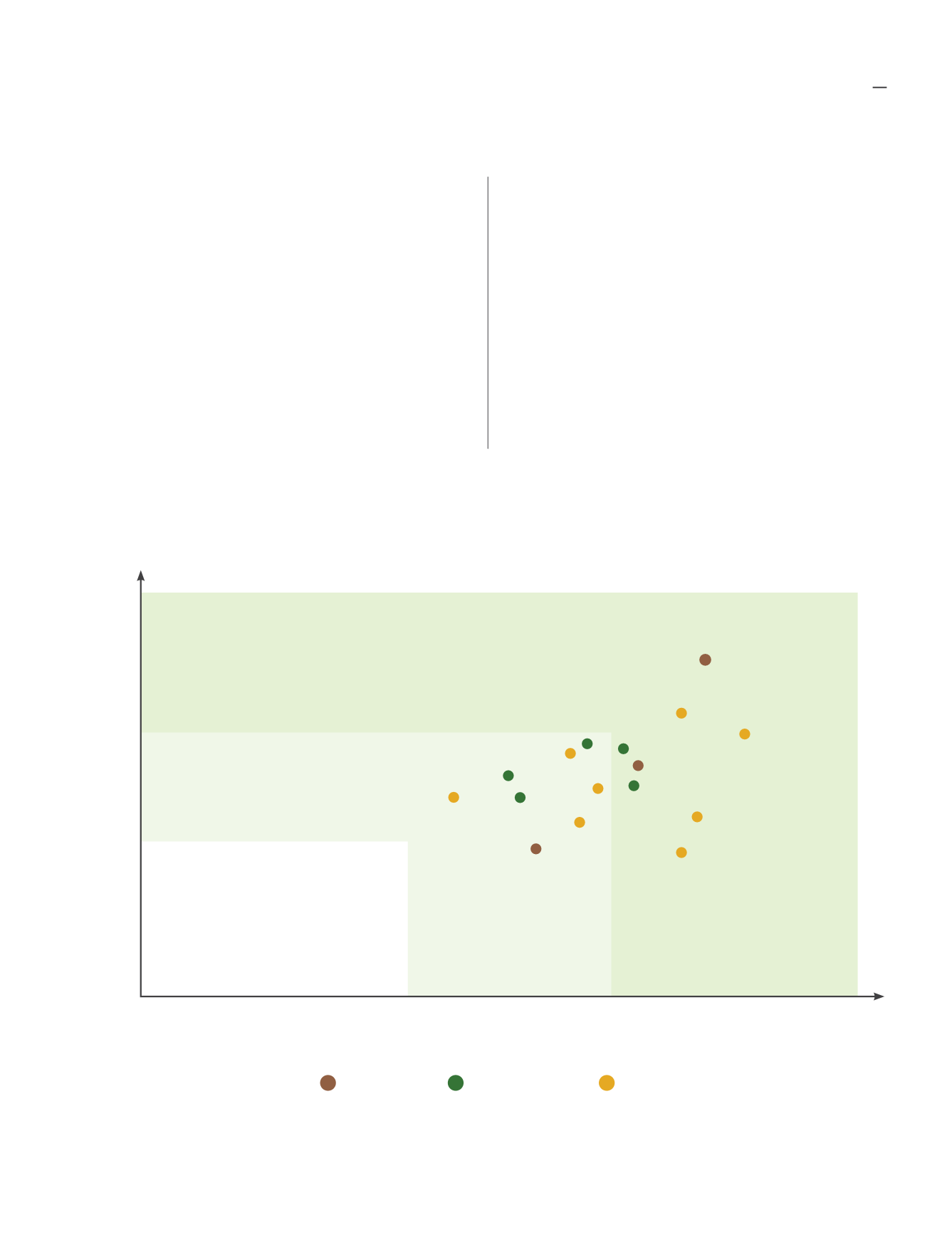

Materiality Matrix
With the help of an independent consultant, the
results of the stakeholder survey were taken into
account during the creation of a materiality matrix in
which the sustainability topics are weighted from the
point of view of the stakeholders as well as feedback
received from the Group Sustainability Committee and
members of management. Given the diverse nature
of our businesses who each contribute towards the
Group’s success differently, we weighted the results of
the materiality assessment according to their influence
on the Group’s financial performance, their employee
headcount and prospective expansion potential.
Importance to the Group
Economic
Environment
Social
Low
Low
Medium
13
5
12
11
1
4
6
15
7
9
10
14
2
3
16
Importance to the Stakeholder
Medium
High
High
Certification for food
safety, sustainability &
others
Occupational
safety & health
Code of ethics &
governance
Benefits &
remuneration
Evaluation
of suppliers /
contractor’s
sustainability
commitment
Free, Prior & Informed
Consent (FPIC)
Fire & Haze
Human & worker’s rights
Sustainable & Traceable Supply Chain
Water Impacts
Biodiversity &
Conservation
GHG Emissions, Discharges &
Waste Management
Pesticides & chemical usage
Community & welfare
8 Equal treatment
Other factors taken into account were the results of
our desktop review on regulations and guidelines,
sustainability trends and peer reports.
The positioning of the sustainability topics indicates
the major focal areas of our sustainability efforts. The
y-axis reveals how important the topics are from the
perspective of our stakeholders (the higher a topic is
placed, the more important it is). The x-axis indicates
the topics that the Group believe is “very highly”
relevant to business success (the farther a topic is
placed to the right, the more important it is).
Grievance
mechanism
&
Resolutions
Reporting
What Matters
19










